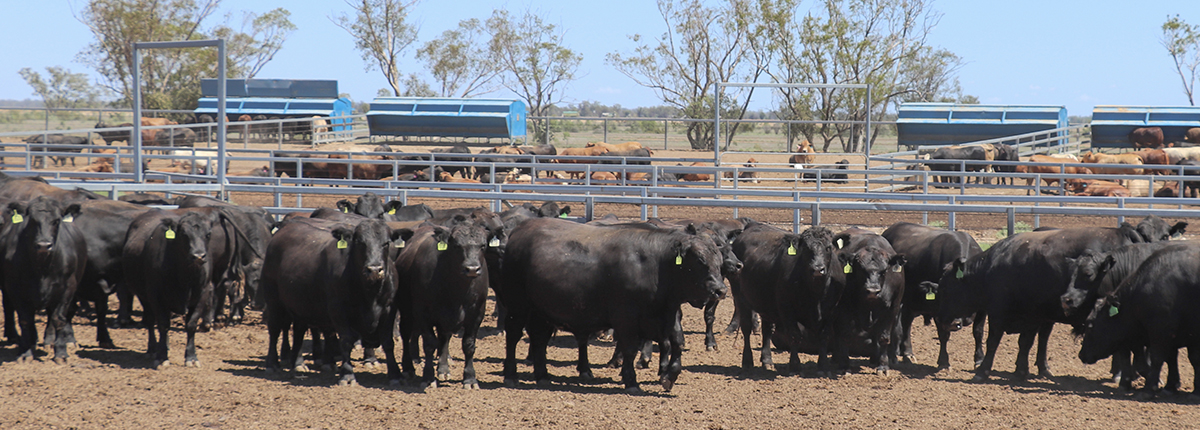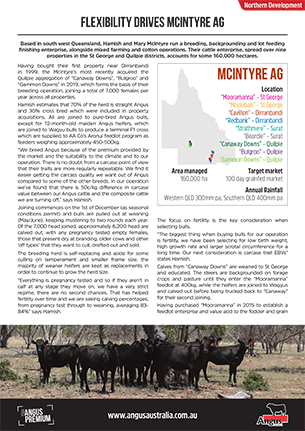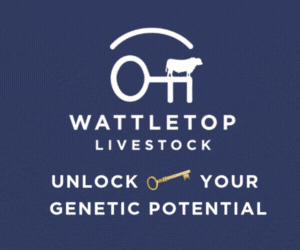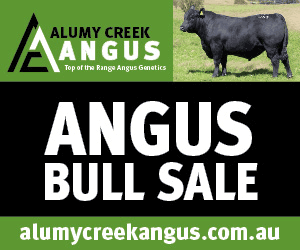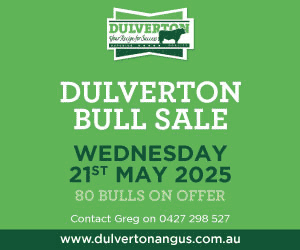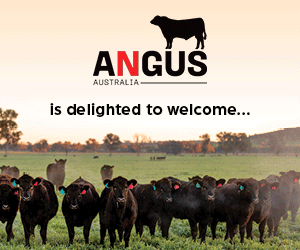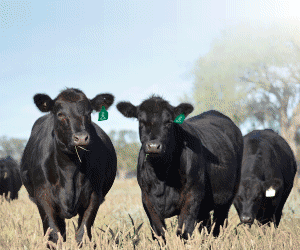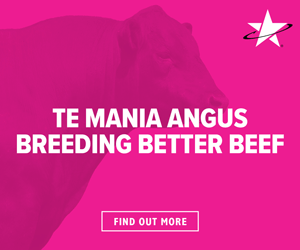Based in south west Queensland, Hamish and Mary McIntyre run a breeding, backgrounding and lot feeding finishing enterprise, alongside mixed farming and cotton operations. Their cattle enterprise, spread over nine properties in the St George and Quilpie districts, accounts for some 160,000 hectares.
Having bought their first property near Dirranbandi in 1999, the McIntyre’s most recently acquired the Quilpie aggregation of “Canaway Downs”, “Bulgroo” and “Gammon Downs” in 2019, which forms the basis of their breeding operation, joining a total of 7,000 females per year across all properties.
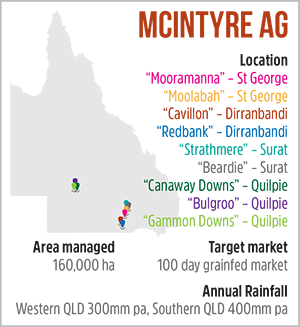 Hamish estimates that 70% of the herd is straight Angus and 30% cross bred which were included in property acquisitions. All are joined to pure-bred Angus bulls, except for 12-month-old maiden Angus heifers, which are joined to Wagyu bulls to produce a terminal F1 cross which are supplied to AA Co’s Aronui feedlot program as feeders weighing approximately 450-500kg.
Hamish estimates that 70% of the herd is straight Angus and 30% cross bred which were included in property acquisitions. All are joined to pure-bred Angus bulls, except for 12-month-old maiden Angus heifers, which are joined to Wagyu bulls to produce a terminal F1 cross which are supplied to AA Co’s Aronui feedlot program as feeders weighing approximately 450-500kg.
“We breed Angus because of the premium provided by the market and the suitability to the climate and to our operation. There is no doubt from a carcase point of view that their traits are more regularly repeatable. We find it easier getting the carcass quality we want out of Angus compared to some of the other breeds. In our operation we’ve found that there is 50c/kg difference in carcase value between our Angus cattle and the composite cattle we are turning off,” says Hamish.
Joining commences on the 1st of December (as seasonal conditions permit) and bulls are pulled out at weaning (May/June), keeping mustering to two rounds each year. Of the 7,000 head joined, approximately 6,200 head are calved out, with any pregnancy tested empty females, those that present dry at branding, older cows and other ‘off types’ that they want to cull, drafted out and sold.
The breeding herd is self-replacing and aside for some culling on temperament and smaller frame size, the majority of weaner heifers are kept as replacements in order to continue to grow the herd size.
“Everything is pregnancy tested and so if they aren’t in calf at any stage they move on, we have a very strict regime, there are no second chances. That has helped fertility over time and we are seeing calving percentages, from pregnancy test through to weaning, averaging 83-84%” says Hamish.
The focus on fertility is the key consideration when selecting bulls.
“The biggest thing when buying bulls for our operation is fertility, we have been selecting for low birth weight, high growth rate and larger scrotal circumference for a long time. Our next consideration is carcase trait EBVs” states Hamish.
Calves from “Canaway Downs” are weaned to St George and educated. The steers are backgrounded on forage crops and pasture until they enter the “Mooramanna” feedlot at 400kg, while the heifers are joined to Wagyus and calved out before being trucked back to “Canaway” for their second joining.
Having purchased “Mooramanna” in 2015 to establish a feedlot enterprise and value add to the fodder and grain being produced on other properties, the McIntyre’s grain feed all steer progeny and cull females through their 3,200 SCU licenced feedlot.
“We feed our own cattle, value adding the grain, cotton seed and hay we produce. We aren’t trying to compete with the bigger feedlots, it’s really a facility through which we can finish our own cattle,” explains Hamish.
“We take a very flexible approach to what we plant, we always have something ready to plant based on our needs and plans get thrown out on the basis of not enough rain, or too much (rarely). When water arrives, we do a gross margin per megalitre and decide what fits. All of our decisions are flexible and cash driven,” he says.
Approximately 4,000 steers (along with 3,000 cull females) are finished in the feedlot each year, with most being fed between 100 and 120 days to a carcase weight of 380kg and are then consigned to processing plants in South East Queensland and Northern NSW between 20 and 24 months of age.
Each cohort are marketed to the best gross margin scenario, with the operation being entirely flexible to capture the best returns. This includes the use of Hormone Growth Promotants (HGPs).
“Historically the straight Angus don’t receive a HGP. However, with the grids the way they are at the moment (March 2021) – around 740c/kg cwt with a HGP – there isn’t an incentive for Angus without a pill,” says Hamish.
The emphasis on selection for carcase traits has seen the McIntyre’s cattle consistently perform in the annual RNA Paddock to Palate competition. The 2020 competition saw Beef Central describe the performance of Hamish and Mary’s Angus and Angus cross entries as ‘one of the most remarkable performances by an individual exhibitor’, with places in all four classes (100-day export class, 70 day trade class, non-HGP 120 day class and the Wagyu challenge) and strong performance all three facets of the competition – weight gain, carcase performance and eating quality.
Hamish credits these results as the culmination of a long-term breeding program coming together.
“The bulls we have purchased are obviously doing the job because we aren’t setting cattle aside for competitions, we are just selecting steers out of our commercial cattle that fit the criteria. The consistent results have been satisfying because it means that those traits are flowing through your female herd” he states.
Angus Australia acknowledges the funds provided by the Australian Government through the Meat & Livestock Australia Donor Company (MDC).
This resource was created as a result of a collaboration between Angus Australia and Meat & Livestock Australia Donor Company (MDC) (Project P.PSH.1063).

